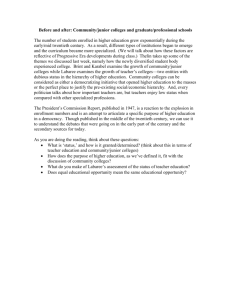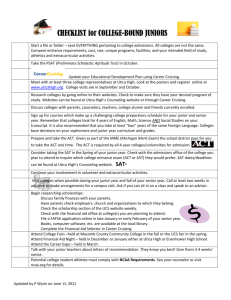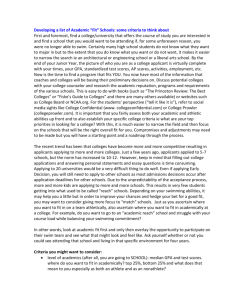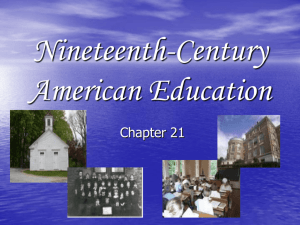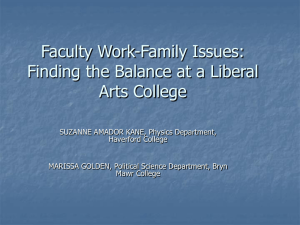Major Events that Shaped American Higher Education
advertisement
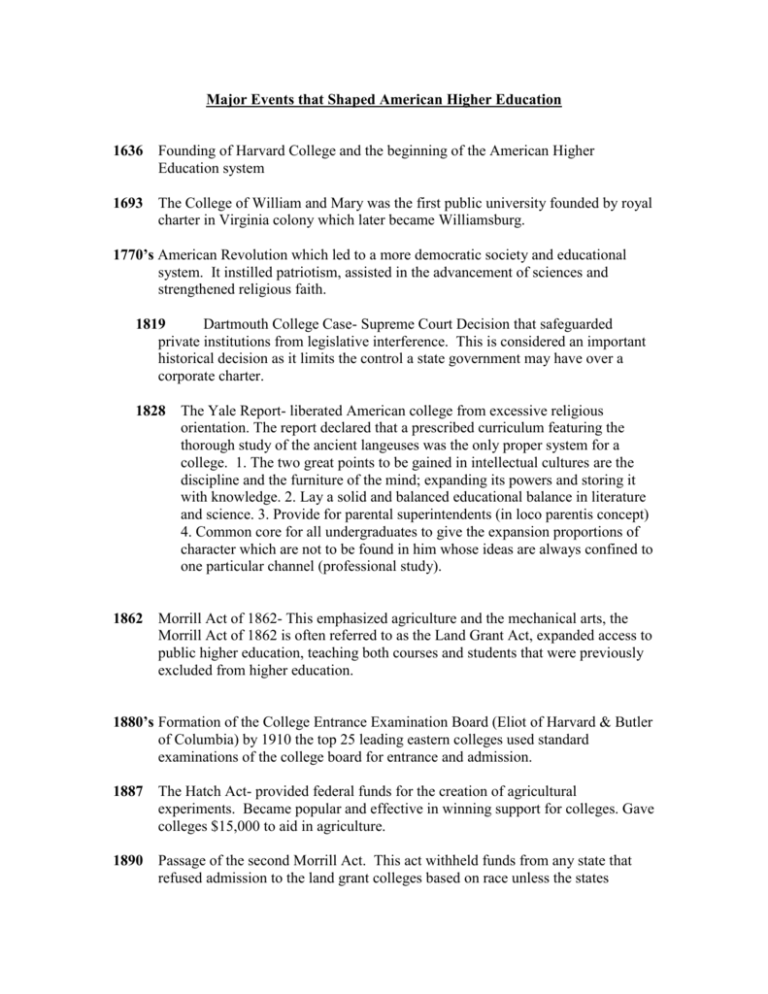
Major Events that Shaped American Higher Education 1636 Founding of Harvard College and the beginning of the American Higher Education system 1693 The College of William and Mary was the first public university founded by royal charter in Virginia colony which later became Williamsburg. 1770’s American Revolution which led to a more democratic society and educational system. It instilled patriotism, assisted in the advancement of sciences and strengthened religious faith. 1819 Dartmouth College Case- Supreme Court Decision that safeguarded private institutions from legislative interference. This is considered an important historical decision as it limits the control a state government may have over a corporate charter. 1828 The Yale Report- liberated American college from excessive religious orientation. The report declared that a prescribed curriculum featuring the thorough study of the ancient langeuses was the only proper system for a college. 1. The two great points to be gained in intellectual cultures are the discipline and the furniture of the mind; expanding its powers and storing it with knowledge. 2. Lay a solid and balanced educational balance in literature and science. 3. Provide for parental superintendents (in loco parentis concept) 4. Common core for all undergraduates to give the expansion proportions of character which are not to be found in him whose ideas are always confined to one particular channel (professional study). 1862 Morrill Act of 1862- This emphasized agriculture and the mechanical arts, the Morrill Act of 1862 is often referred to as the Land Grant Act, expanded access to public higher education, teaching both courses and students that were previously excluded from higher education. 1880’s Formation of the College Entrance Examination Board (Eliot of Harvard & Butler of Columbia) by 1910 the top 25 leading eastern colleges used standard examinations of the college board for entrance and admission. 1887 The Hatch Act- provided federal funds for the creation of agricultural experiments. Became popular and effective in winning support for colleges. Gave colleges $15,000 to aid in agriculture. 1890 Passage of the second Morrill Act. This act withheld funds from any state that refused admission to the land grant colleges based on race unless the states provided separate institutions for minorities. Expanded public higher education to include many blacks who previously were unable to attend college. 1896 Carnegie Foundation- philanthropic foundation that started donating money to colleges. This changed the role of the president of institutions to raising funds. The foundation also started a compressive system of American Higher Educationlater this would form the Carnegie Classification system in 1973. 1901 The founding of Joliet Junior College in Illinois. Founded under the influence of William Rainey Harper, president of University of Chicago. Joliet Junior College is the oldest public junior college in the nation. 1940 American Association of University Professors establishes a Statement of Principles on Academic Freedom and Tenure. The statement’s purpose is as Follows: Academic freedom is essential to these purposes and applies to both teaching and research. Freedom in research is fundamental to the advancement of truth. Academic freedom in its teaching aspect is fundamental for the protection of the rights of the teacher in teaching and of the student to freedom in learning. It carries with it duties correlative with rights. Tenure is a means to certain ends; specifically: (1) freedom of teaching and research and of extramural activities, and (2) a sufficient degree of economic security to make the profession attractive to men and women of ability. Freedom and economic security, hence, tenure, are indispensable to the success of an institution in fulfilling its obligations to its students and to society. 1944 GI Bill (Serviceman’s Readjustment Act) This act provided financial support. For veterans of World War II who wished to pursue higher education. The GI Bill was a milestone in the federal funding for education of individuals and did much to break down the economic and social barriers to allow millions of Americans to attend college. 1947 The Truman Commission Report- called for the establishment of a network of public community colleges that would charge little or no tuition, serve as cultural centers, be comprehensive in their program offerings with emphasis on civic responsibilities, and would serve the area in which they were located. This created the community college system across the United States. 1954 U. S. Supreme Court rules in the Brown v. Board of Education of Topeka decision that “separate but equal” educational facilities are unconstitutional. 1961 President John F. Kennedy issues an executive order creating the President’s Committee on Equal Employment Opportunity, which refers to “affirmative Action” for the first time. 1961 Dixon v. Alabama court ruling establishes the notion that students at public Institutions of higher education have constitutional rights and should be given due process in dismissal from the institution. 1964 Civil Rights Act passed, which protects people from discrimination based on race, color, or national origin. The Higher Education Act of 1965 is passed, establishing a broad federal policy agenda for higher education. Student aid legislation 1965 1968 The Supreme Court rules in Pickering v. Board of Education that First Amendment rights are viewed as having been violated if a faculty member is either disciplined or terminated for public pronouncements on matters of public concern. 1970 Carnegie Classification of Institutions of Higher Education is developed by the Carnegie Commission on Higher Education. It is formally published in 1973 with revisions published in 1976, 1987, 1994, and 2000. 1972 Reauthorization of Higher Education Act, in which Title IX prohibits discrimination based on gender, marital and parental status in the following areas: admissions, financial aid, health and insurance benefits, career guidance, and counseling services, housing, courses and other educational activities, and scholastic, intramural, club or intercollegiate athletics. The Act also includes the Basic Equal Opportunity Grant renamed the Pell Grant in 1980- this affirmed the nation’s commitment to providing equal educational opportunity for the disadvantaged. 1974 1990 Family Educational Rights and Privacy Act (FERPA) was enacted by Congress. American with Disabilities Act provided arrangements and policies for allowing disabled students to attend higher education institutions opens higher education by offering disabled persons special privileges to complete their education.

